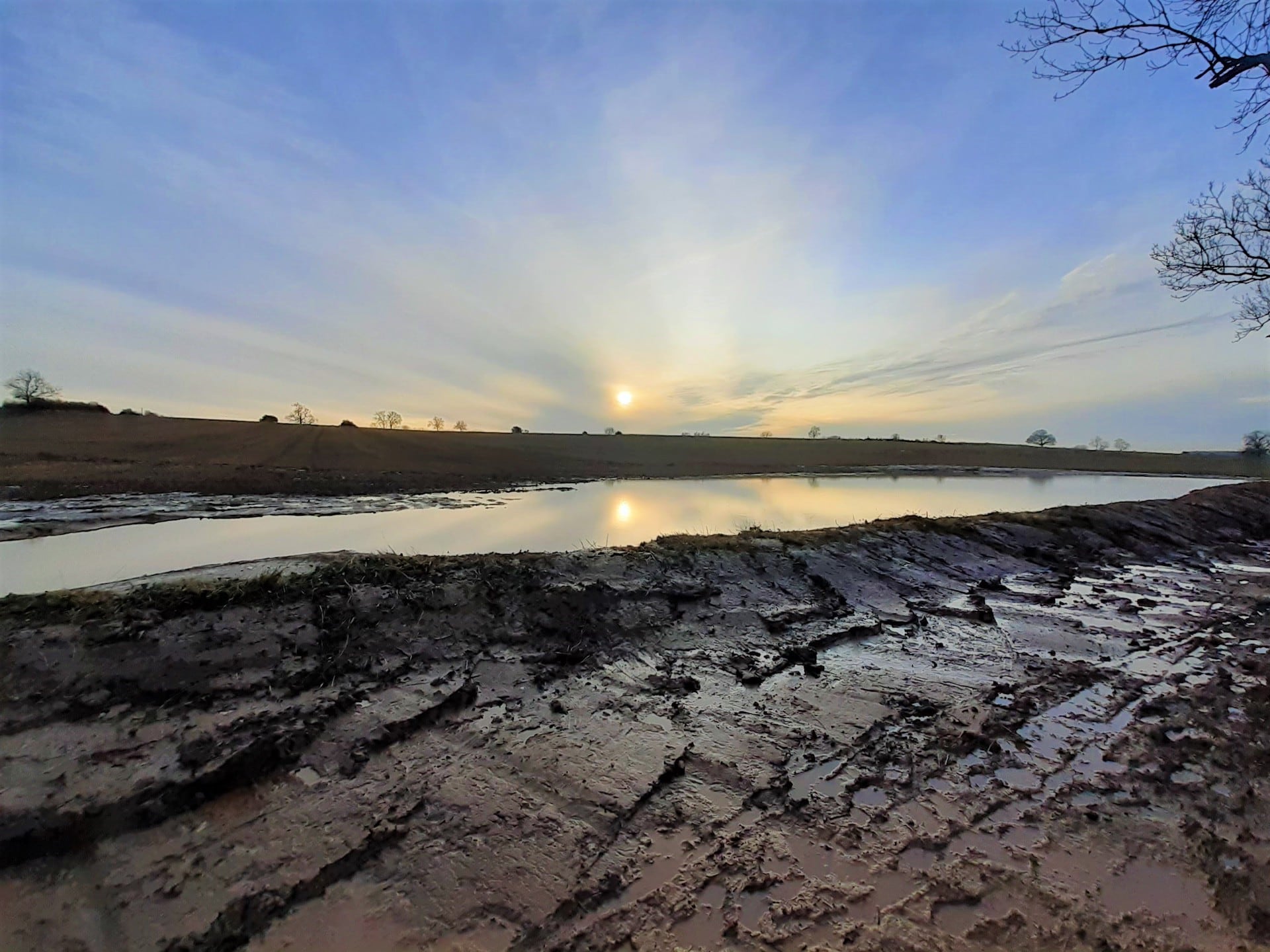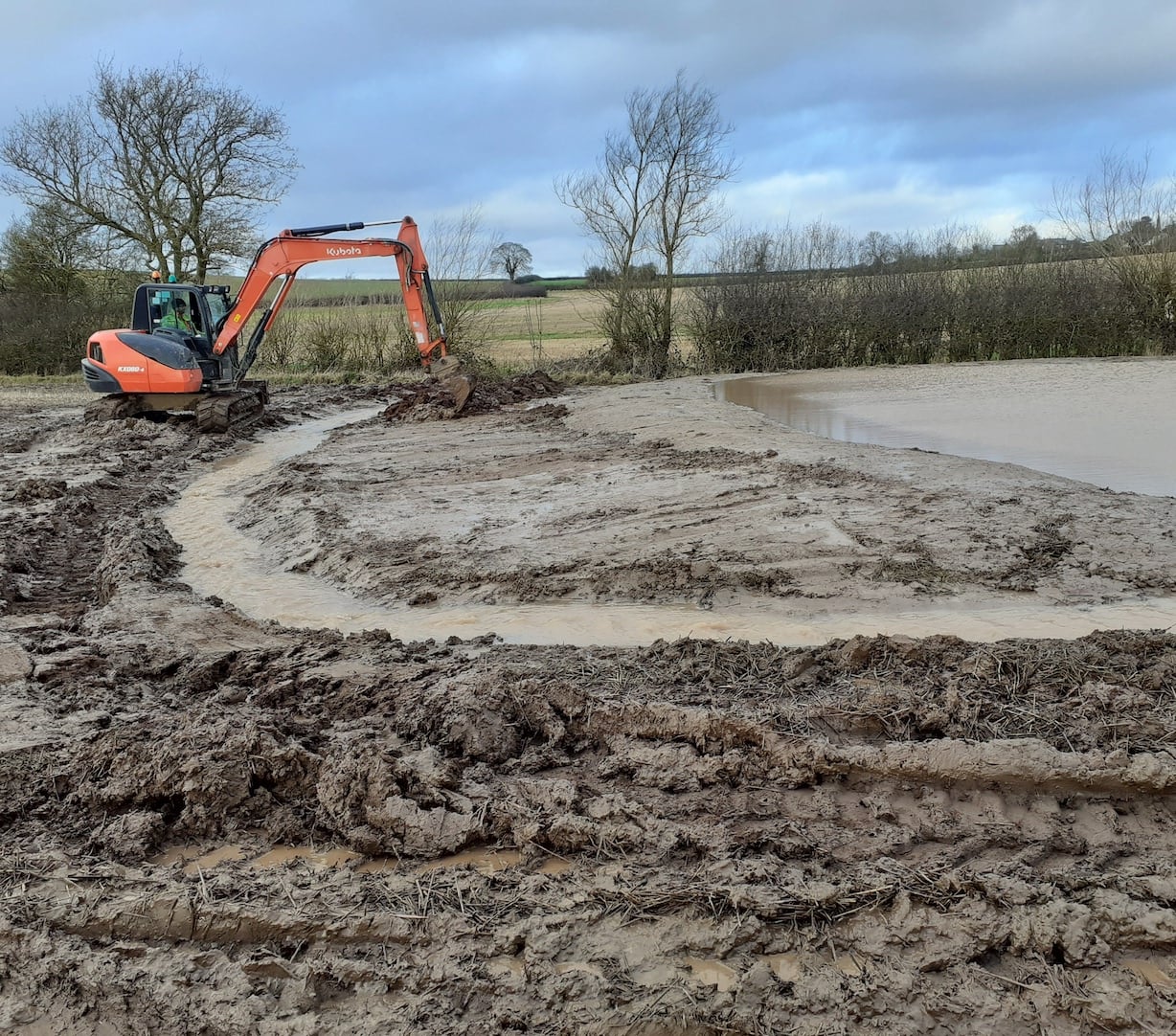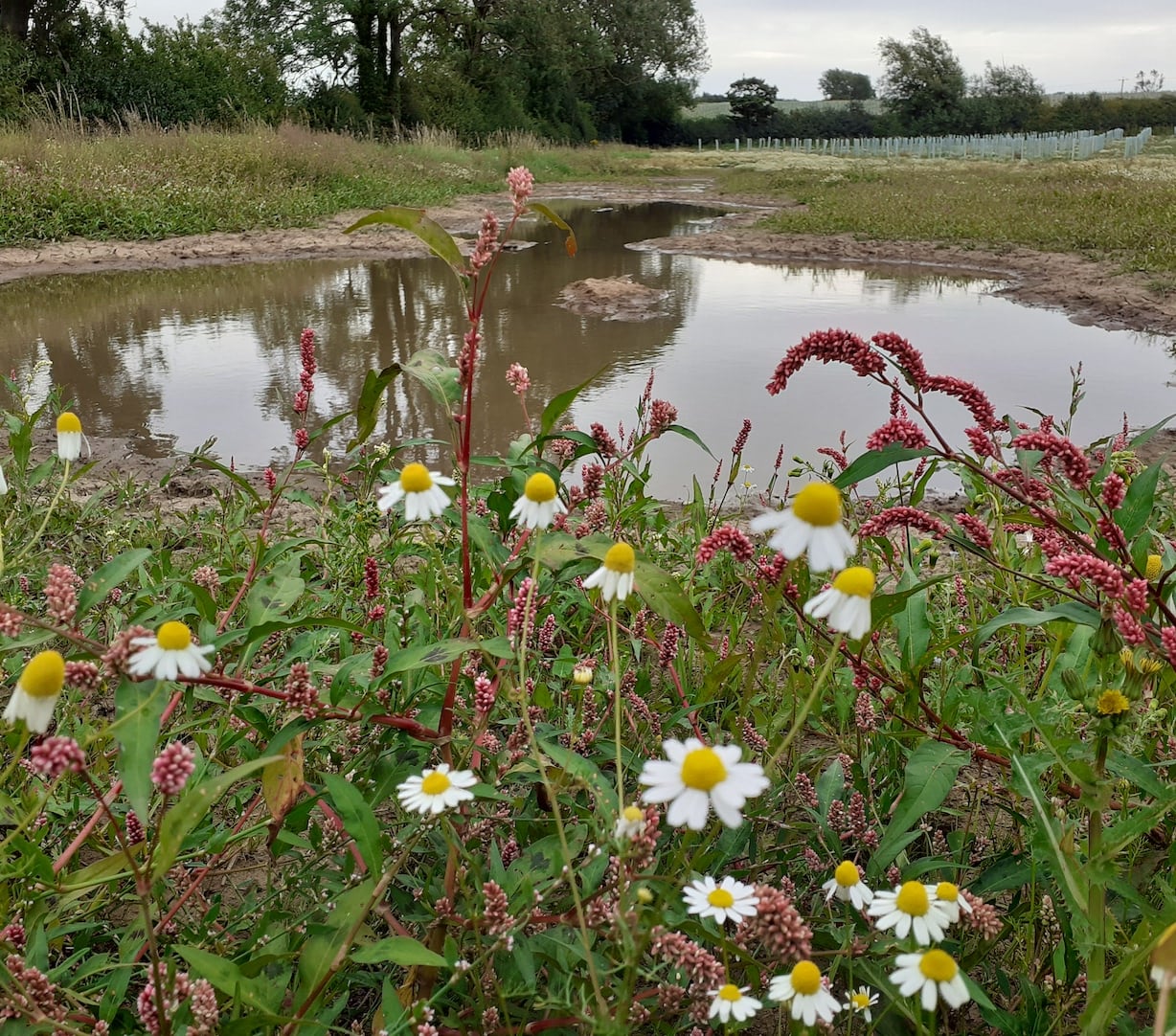Queen Elizabeth Jubilee Woodland Extension (QE2)
Sediment trapping wetland scrapes and restoration on new Woodland Trust site
About the Work
The Partnership really came into force in this project, which took funding from both the River Restoration fund and the Developer Contribution Scheme, working in partnership with the Woodland Trust. Early engagement with the Woodland Trust on development of their new site meant wetland scrapes could be placed to intercept flow paths down the sloping land, to tram sediments before they joined the watercourse, a tributary of the Mease, before the site was planted up with trees.
Leaky Woody Barriers
Leaky barriers placed in the watercourse slowed down peak flows and allowed sediment to settle out, as well as pushing high flows onto the bank and into the sediment trapping scrapes.
Sediment Trapping Wetland Scrapes
The scrapes intercept run off coming down the hill which is laden with sediment and phosphates. The sediment then settles out as water evaporates, percolates into ground water, or runs round the bunds into the watercourse containing fewer pollutants. These temporarily wet features are also rare habitats that are important for supporting a diverse range of plant and animal species such as invertebrates, amphibians and wading birds.
River Restoration
Part of the watercourse was reprofiled to allow increased connectivity to the banks, to improve the riparian habitat and allow sediments to be deposited on the floodplain.

With thanks to
Woodland Trust, Foxley Earthworks, Pioneer Environment.




